Pastoralists to the rescue – Part 1
Host: Kachana Station
Written by Chris Henggeler, Owner – Kachana Station
It was in early 1979 that I arrived in Australia. Most of my time since then has been spent somewhere in the north, living and working in the bush.
Good fortune offered me the opportunity to do some travelling before and during that time and to compare notes with land managers in other countries. Hence, standing on the shoulders of others (to whom I remain deeply indebted), I make a case below for pastoralism to take on a new role as community-builder.
Not in the sense where land is taken up, stocked and subsequent exports see returns being injected into local rural economies (of course this happens too) …
Not necessarily even as supplier of a source of food (although I could readily survive on Kachana Happy Beef for the rest of my days) …
No, I envisage the demand for ‘Regenerative Pastoralism’ to be driven by people living in cities and towns.
By people who for most of their lives have enjoyed life-styles that were seemingly insulated from ecological reality.
By people who now notice that their water-supply is no longer reliable.
By people who will get sick of mounting insurance costs for infrastructure.
By people who all of a sudden realise that the relative sale-value of their houses or hobby-farms are declining due to fire-danger or flood risk.
By people who notice a rise in respiratory problems in their children as the dust increases because trees get cut down for safety reasons and parks and gardens dry out as we “save water”.
The list will get longer, but in a nutshell the people who will be calling for “land doctors” will be those who wake up to the fact, that we are all in this together, and that ultimately any form of sustainable human economy hinges on landscapes that remain healthy. Landscapes that clean the air, purify and supply water and offer abundant healthy produce. Landscapes that sustain livelihoods, meaningful challenges, inspiration and recreation.
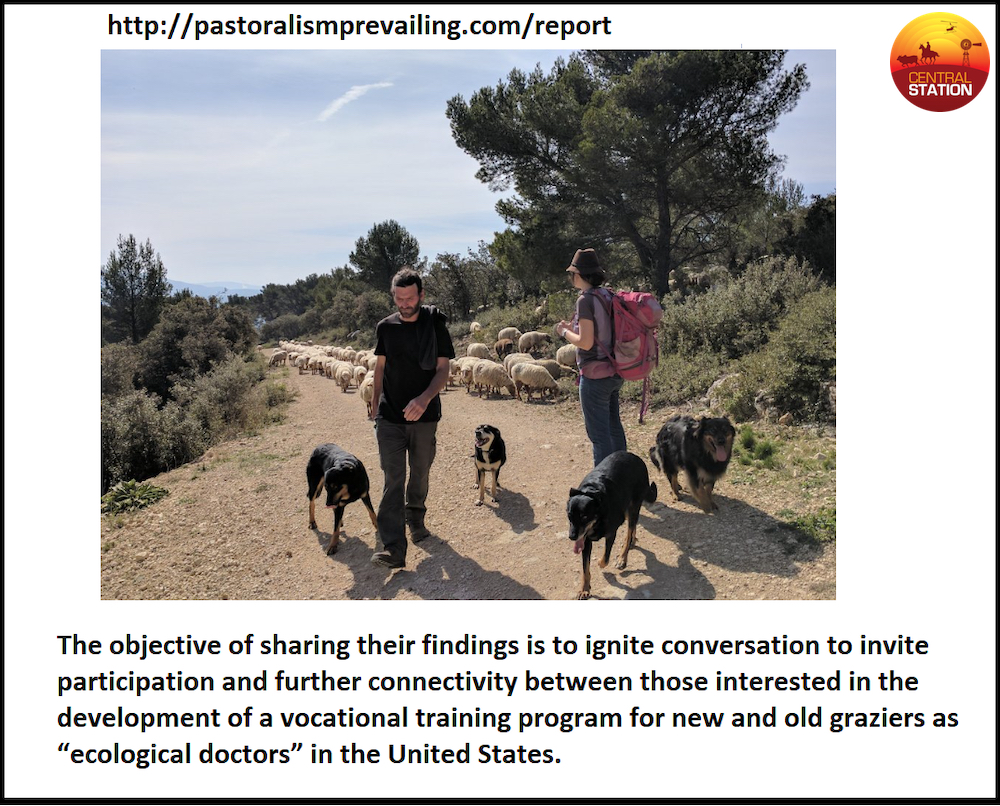 We can take heart in the fact that in some places this line of thinking is already being acted upon. It is ‘early days’ yet, and a journey of at thousand miles begins with a single step!
We can take heart in the fact that in some places this line of thinking is already being acted upon. It is ‘early days’ yet, and a journey of at thousand miles begins with a single step!
Part 1. New Millennium, New Challenges
For those living in human-made environments like towns and cities, the dots that connect fire, droughts and floods as siblings of ecological dysfunction, are less obvious to spot. Spend several full seasons in the bush, attend a few courses and then read up on the subject matter and our eyes and other senses begin to open up to what the land is telling us.
Unfortunately, this is not a realistic option for most. Even many of us who do live in the bush do not get to spend enough time doing such important things. Our time is claimed by other important things and it seems there are never enough day-light hours. And when there are (during our summer-months), we hear “It’s too … hot!”. By the time the rains do come and nature is fully awake, most people are on holidays and stations are left with skeleton crews who have their work cut out for them.
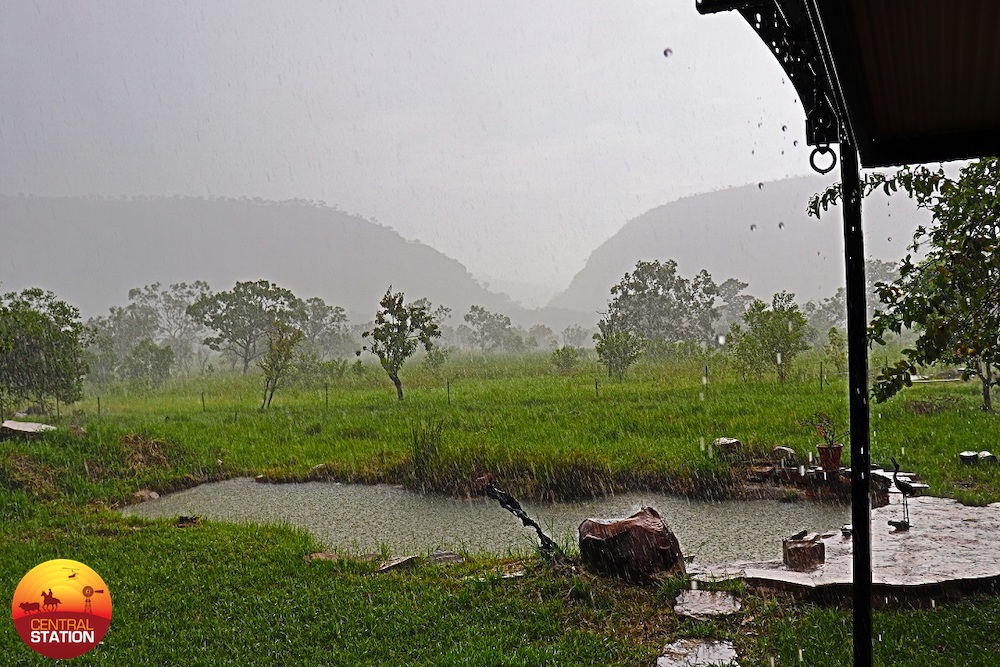 Nearly every station I have been on has growing list of ‘things to do’, all of them waiting for that “rainy day”.
Nearly every station I have been on has growing list of ‘things to do’, all of them waiting for that “rainy day”.
Station-life is not for everybody. Perhaps, just as well, because there would never be enough stations and we’d all be tripping over each other. A by no means exhaustive list of traits that come in handy on a station include: the love and respect for the bush, a love for animals and a love for open spaces, the capacity to think and work independently, resourcefulness, fitness, flexibility, adaptability, being able to deal with isolation, being ignorant of the word ‘bored’ and having a measure of uncommon good sense.
However, if I were to boil it down to three things, they would be attitude, attitude and attitude.
With the right attitude just about anybody can make a valuable contribution to station-life.
Arguably the pastoral industry has one of the largest active ecological footprints in Australia. Our impact can be massive. In fact, it ought to be massive! Massive in a positive sense, and often it is.
(I make no excuses for a few ‘cowboys’ [in the outback this term is seldom applied as a compliment] and there is no excuse for cruelty to animals or people beyond what nature dishes out to all of us anyway.)
Our large footprint allows us to know land that most of the electorate never see, let alone set foot upon. Viewed through a commercial lens, I am talking about the “80%” of the land that produces not even “20%” of income. This includes land not managed by pastoral interest groups and land not being managed at all. People living here some centuries ago would have shaken their heads in disbelief.
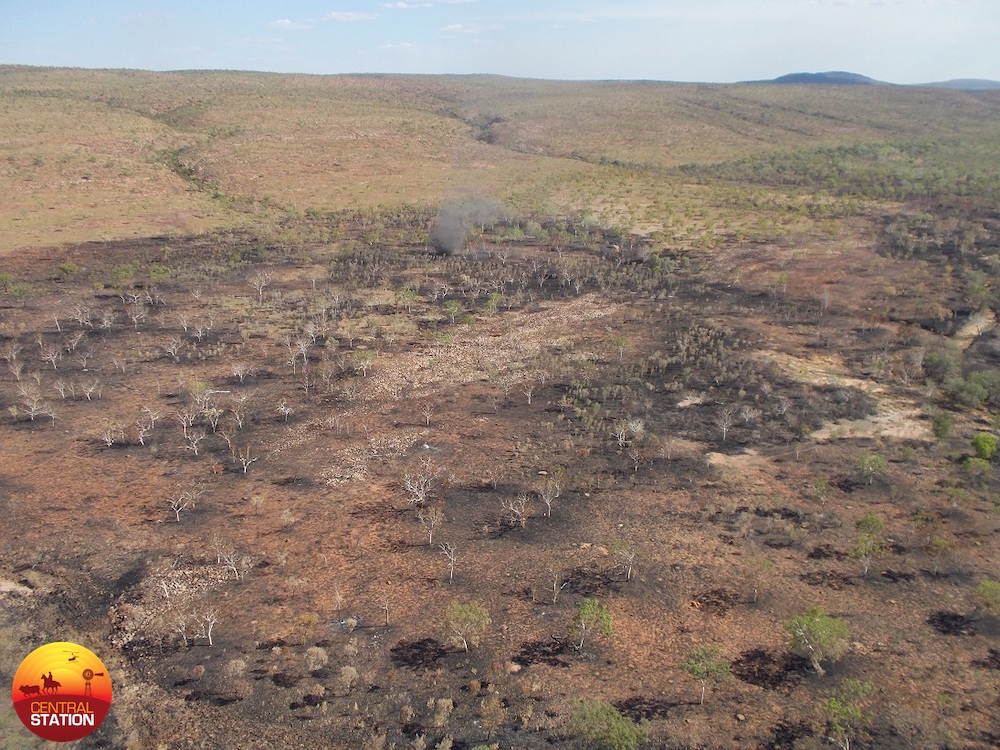 ‘Management by abandonment’ – People know it’s there, but do not know what to do with it. Restoration costs remain prohibitive. When senescent vegetation builds up, if lightning does not hit it first, incendiaries are sometimes used for “fuel reduction”.
‘Management by abandonment’ – People know it’s there, but do not know what to do with it. Restoration costs remain prohibitive. When senescent vegetation builds up, if lightning does not hit it first, incendiaries are sometimes used for “fuel reduction”.
Amongst the busyness and demands of modern life it is easy to overlook that the mentioned “80%”, consists of what, in effect we can call “human-made environments”. Meaning, these environments were shaped by humans, and maintained by humans in earlier times. The manner in which people acted and interacted with the land, shaped the landscapes we now have.
Throughout millennia there would have been a sort of custodianship in place that demanded an intimate connection with the land. In his book “Call of the Reed Warbler” Charles Massey points out the relevance of this relationship in greater detail. Not only surviving oral traditions, but remaining evidence out there in our landscapes suggests that humans played significant roles in maintaining some sort of ecological balance.
A ‘management by abandonment’ approach (often resorted to in areas where there are no paying jobs that are meaningful) is now coming back to haunt us. Call it what you will, seasonal fluctuations, Global Warming, Climate Change, Climate Extremes, whatever. I call it feral weather. There will always be external factors that we cannot do much about (sunspots, volcanoes, etc.), but there are internal factors that we have great influence over – how we behave towards the land.
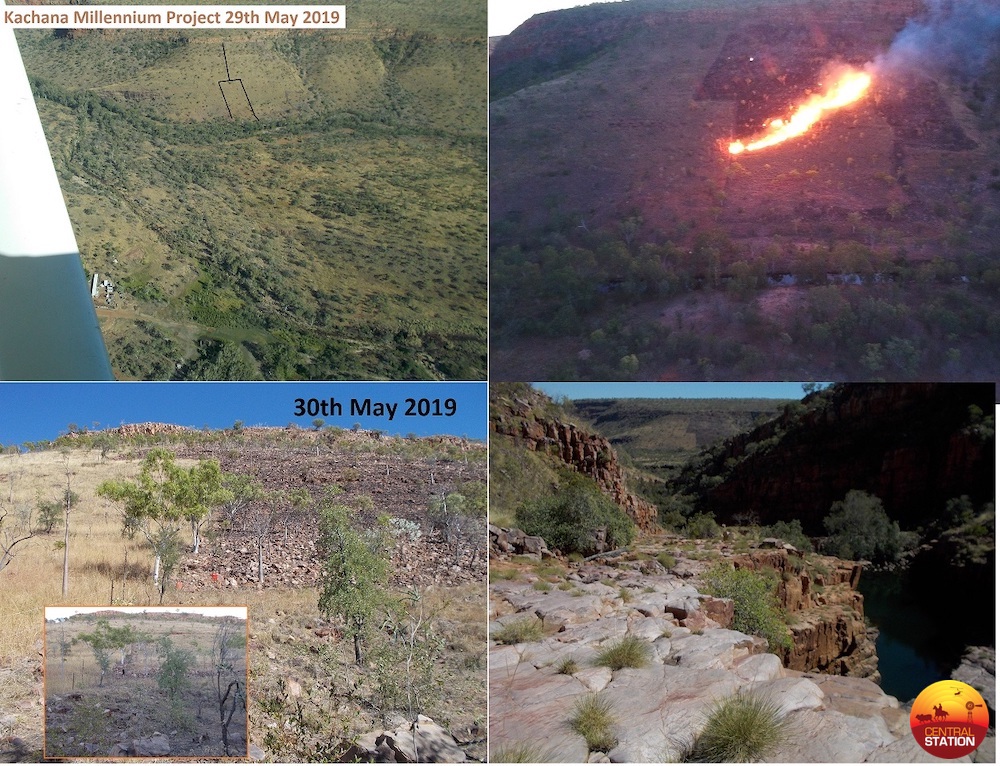 The intent of the Kachana Millennium Project is to tease out the long-term effect of favouring a particular tool in “human shaped environments”. We still have 980 years to run!
The intent of the Kachana Millennium Project is to tease out the long-term effect of favouring a particular tool in “human shaped environments”. We still have 980 years to run!
Stockcamp logic tells me that the behaviour of the weather determines the climate we get. I see the weather behaving badly and I have become convinced that there are practical things that can be done about it.
If a bunch of us are having a great time at our favourite watering-hole and a storm brings down a tree that smashes through the roof and people get hurt, I call that bad-timing. I also call that an ‘external influence’ on our health.
But if we are all having a great time and I forget when to stop, and end up with one big headache the next morning, this may also have something to do with timing, but it has more to do with what I call an ‘internal influence’ on my health. There was something I could have done to avoid the pain. There is something I can do to avoid that sort of pain in future.
Similarly, there is much that can be done to mitigate the pain brought on by the three dangerous siblings – fire, drought and flood.
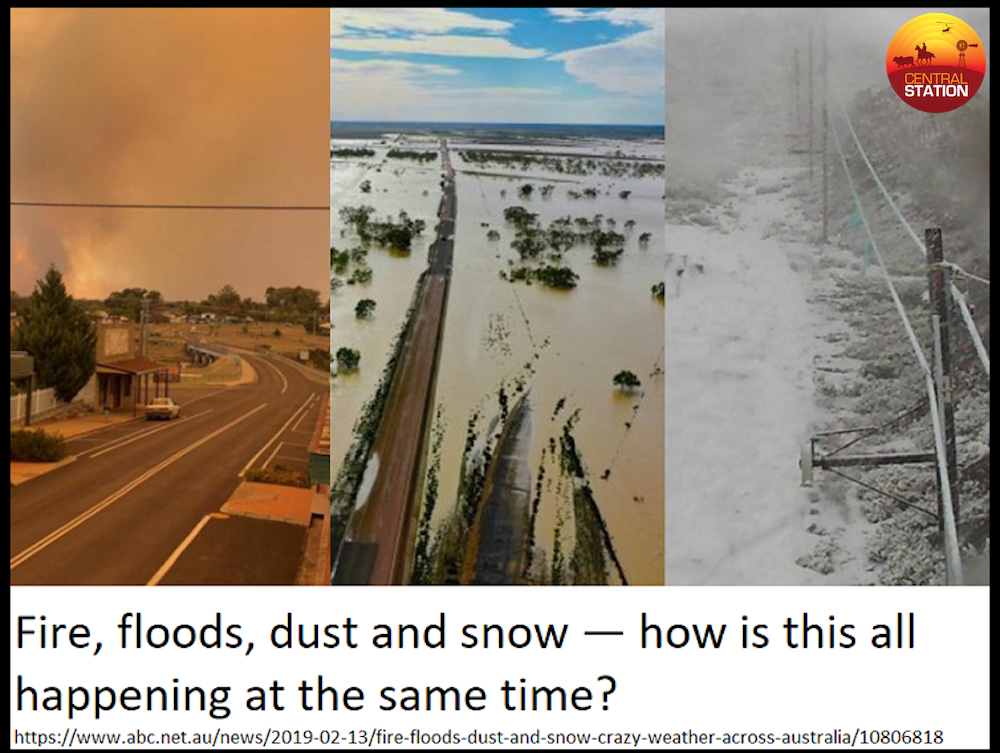 Journalists must ask questions. But, do we want answers or do we need workable solutions? Note: On that same day others in the country were experiencing drought!
Journalists must ask questions. But, do we want answers or do we need workable solutions? Note: On that same day others in the country were experiencing drought!
In an earlier post I explain how regenerative pastoral practices have the potential to deliver water-security at landscape levels. I also made an argument for both the capacity of and the need for the pastoral industry to produce landscape-doctors. i.e. People who can heal the land, people who have the knowledge as well as the skill-set to recognise disrupted ecosystem function and who then are able to act so as to facilitate and enhance regeneration.
For our city-based friends: What is ecosystem function?
There is no one-word answer and there is no simple answer that will cover all bases. Ecosystem function remains a dynamic complexity of physical and biological processes that generate and sustain life on this planet. A practical way for us land-managers to look at it is by simultaneously keeping an eye on four processes in particular:
- the flow of energy which keeps the system going
- how water [a seasonal boost in most places] is cycling throughout the system
- the turn-over of minerals and nutrients [working with what is available on site]
- the biodiversity [life] that the three physical processes above then support
Pastoral land-doctors have the capacity to provide water-security at community and landscape levels! (I trust that as this challenge becomes more obvious to the public incentives will appear).
World-wide there is now a growing number of producers putting the relevant skills to good use. (At the end of this post there is a list of links with a few examples.)
A major reality check is that the pastoral industry is in the business of responding to markets. Nobody survives in the “green” if good intentions put them into the “red”. (Meaning: ecological doctoring has costs attached that need to be recognised as well as paid for.)
The profitability of an existing business therefore comes before regenerating areas that cannot be reclaimed in a commercially feasible manner. This is the case particularly in areas that may have been in ecological decline for centuries or even longer. By necessity therefore current regenerative practices within the industry focus on areas where there is a justifiable return on investment.
Fair minded people will appreciate that many of the spectacular regenerative achievements will only be found on smaller properties and in the more accessible areas on larger spreads. Only few die-hards, idealists and optimists look at country where returns on investment require a multigenerational investment approach. And if they do, they still need to get it right! The alternative is to lose money or lose face, or both. That is not much of an incentive!
Money that currently justifies the pastoral industry flows mostly because there are over 7,000,000,000 human mouths to feed on the planet. Like it or not, if you eat, you are involved in agriculture!
It is the daily demands of billions of people and how they spend, that shapes agriculture and other food industries.
We hear voices proclaiming we do not need the pastoral industry because:
- Over 80% of red meat is produced by small farmers anyway
- Plant-based diets are a viable alternative to meat
- Eating fake meat stops the need to slaughter animals
Perhaps there is substance to some of these claims. I do not know.
What we do know for certain is this:
Dietician, musician, footballer, kick-boxer, plumber, professor, pimp, politician or whoever… take away their fluids and within hours they will begin to dehydrate and their individual performances will end up being equal.
Similarly, even the best-practice farm will not sustain agricultural production in the face of dehydrating landscapes around it.
The pastoral industry already has access to both the tools and the skills to implement the rehydration of soils. (i.e. water-security!) And this I see to be good news!
Once landscapes begin to dehydrate droughts, floods and fires can only get worse.
Media reports indicate that nature is driving home these truths not only in Australia.
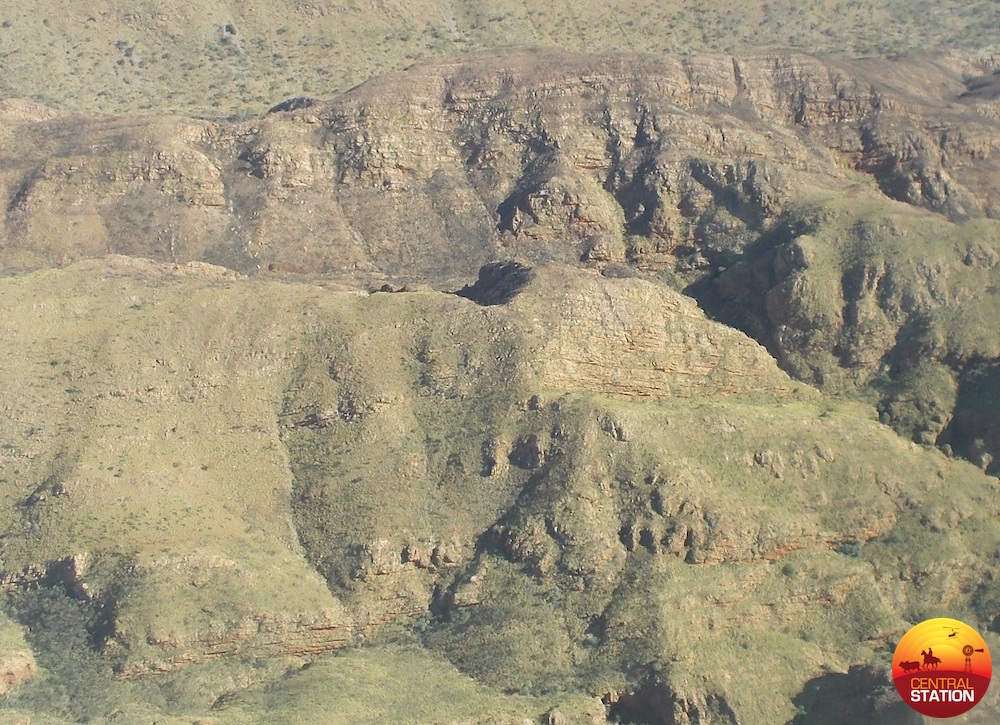 There remains the fact that much sunlight shines down every day and much rain drops onto areas where modern humans do not live or no longer know how to make a living. These areas are becoming feral-weather-makers. – To achieve water-security we need to rebuild the sponges and wetlands that once dotted such landscapes.
There remains the fact that much sunlight shines down every day and much rain drops onto areas where modern humans do not live or no longer know how to make a living. These areas are becoming feral-weather-makers. – To achieve water-security we need to rebuild the sponges and wetlands that once dotted such landscapes.
People can survive for remarkably long periods on poor diets and we also know that people can sometimes get away with poor farming practices. But a general lack of water-security is something that most people now living on the planet have not yet experienced.
Fortunately, not all of nature’s lessons are cruel. When we learn what works, she often even offers us a free ride. But give her the spurs, don’t be surprised if she starts bucking!
To regenerate the productivity of landscapes, we can make use of processes that have passed the test of time and that Nature continues to demonstrate. In fact, they are the same processes that built the natural wealth that humans have been exploiting for millennia.
Biomimicry is what we call it, when we learn from nature and then apply that knowledge.
Regenerative pastoral practices mimic the very processes that built the fertility, resilience and productivity into the savanna landscapes where the pastoral industry has its roots. By managing the behaviour of domesticated megafauna to rehydrate landscapes, Australia is poised to become a world-leader in rebuilding savanna-systems.
(to be continued)
List of links – What others do or say:
- Adaptive Grazing 101: What is Adaptive Grazing?
- Healing the Land: One heart one mind at a time
- Land Stewardship on Chihuahuan Desert Grasslands of Mexico
- Soil Carbon Cowboy Films
- Walter Jehne: Regenerating the Soil Carbon Sponge
